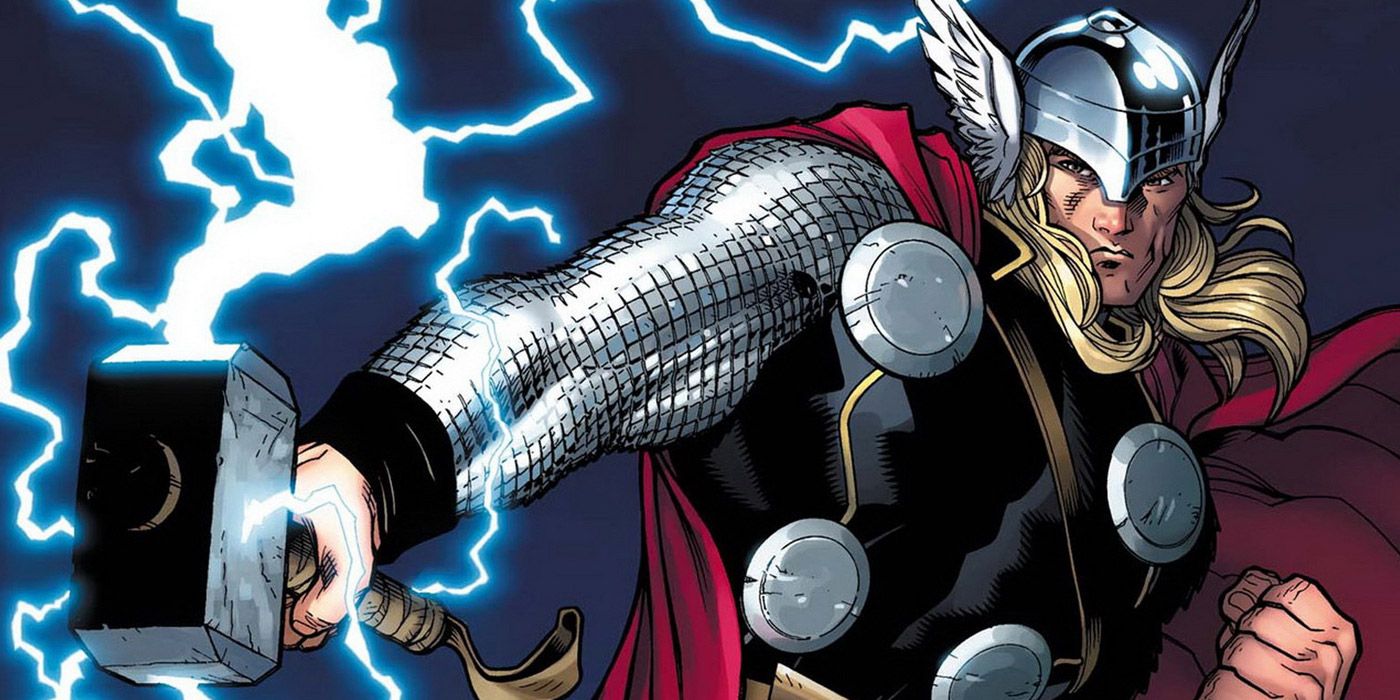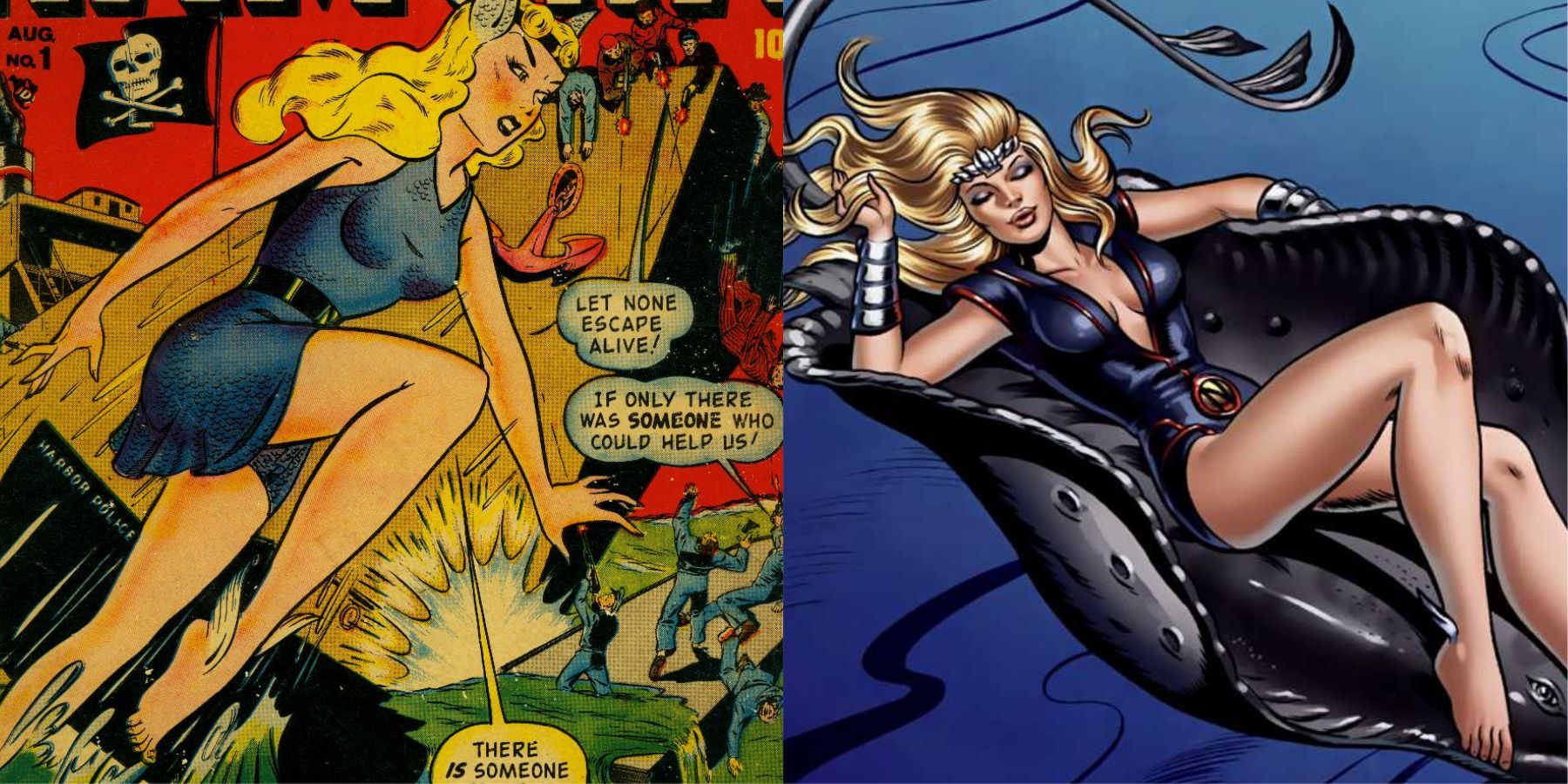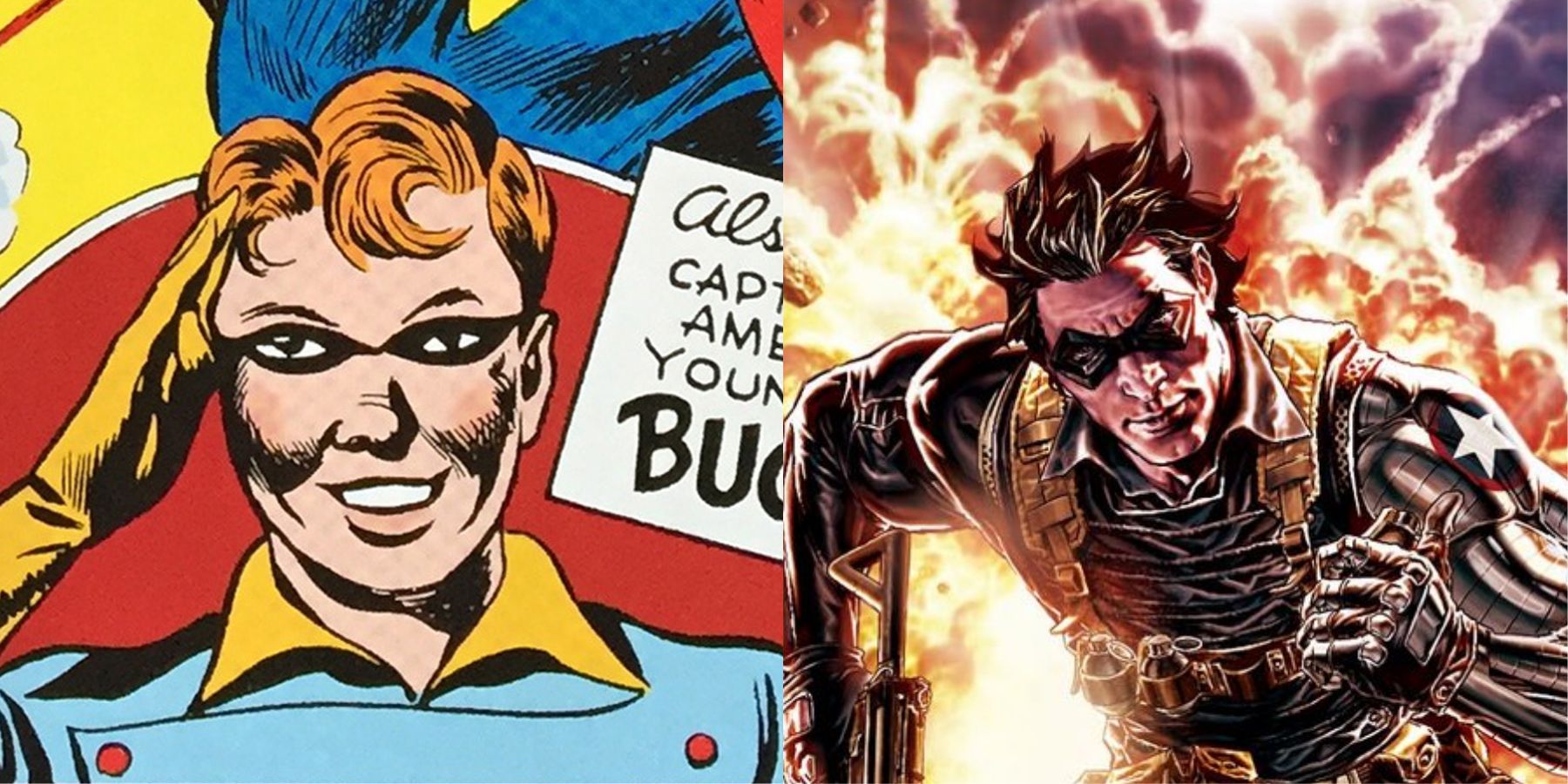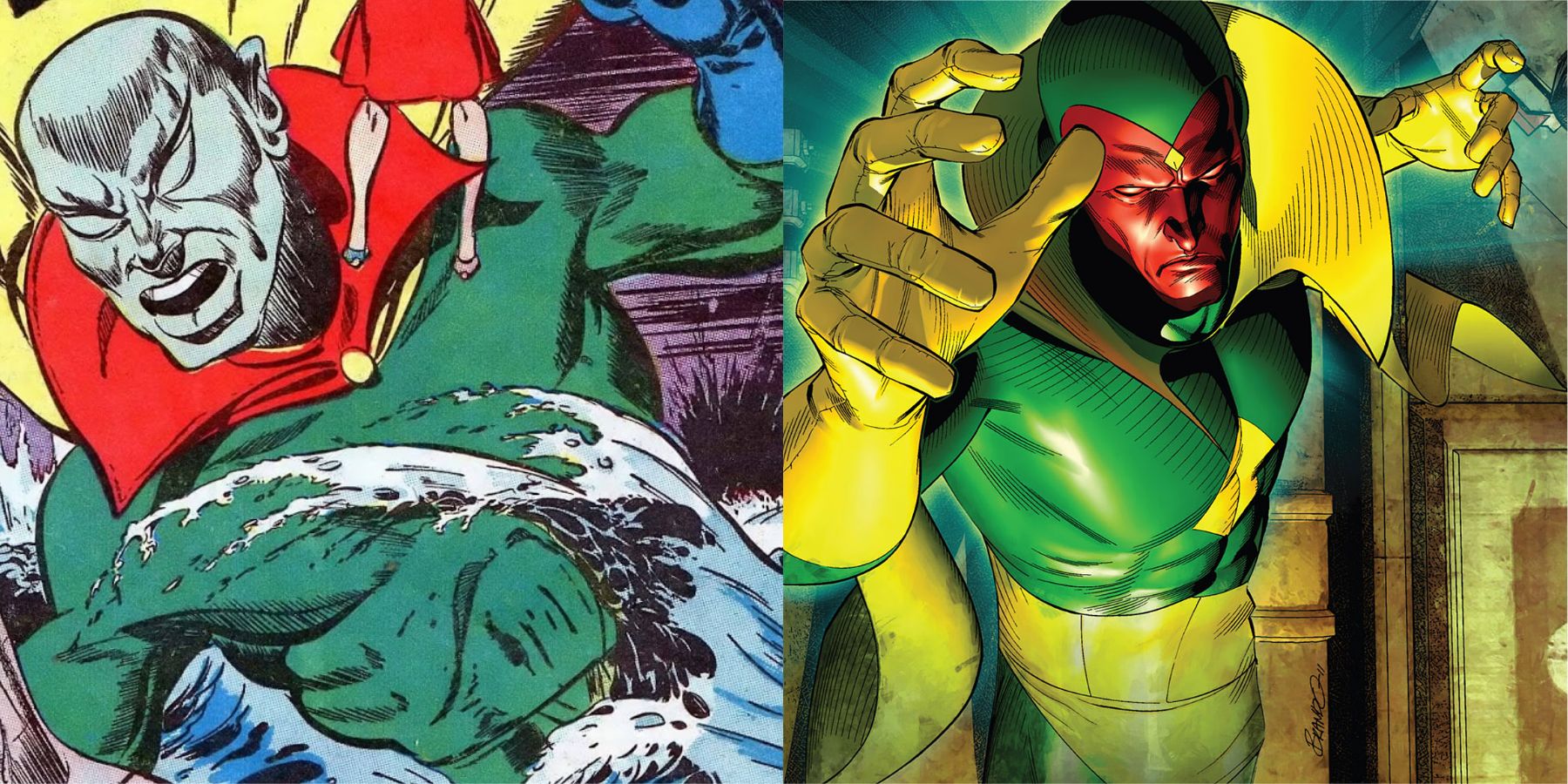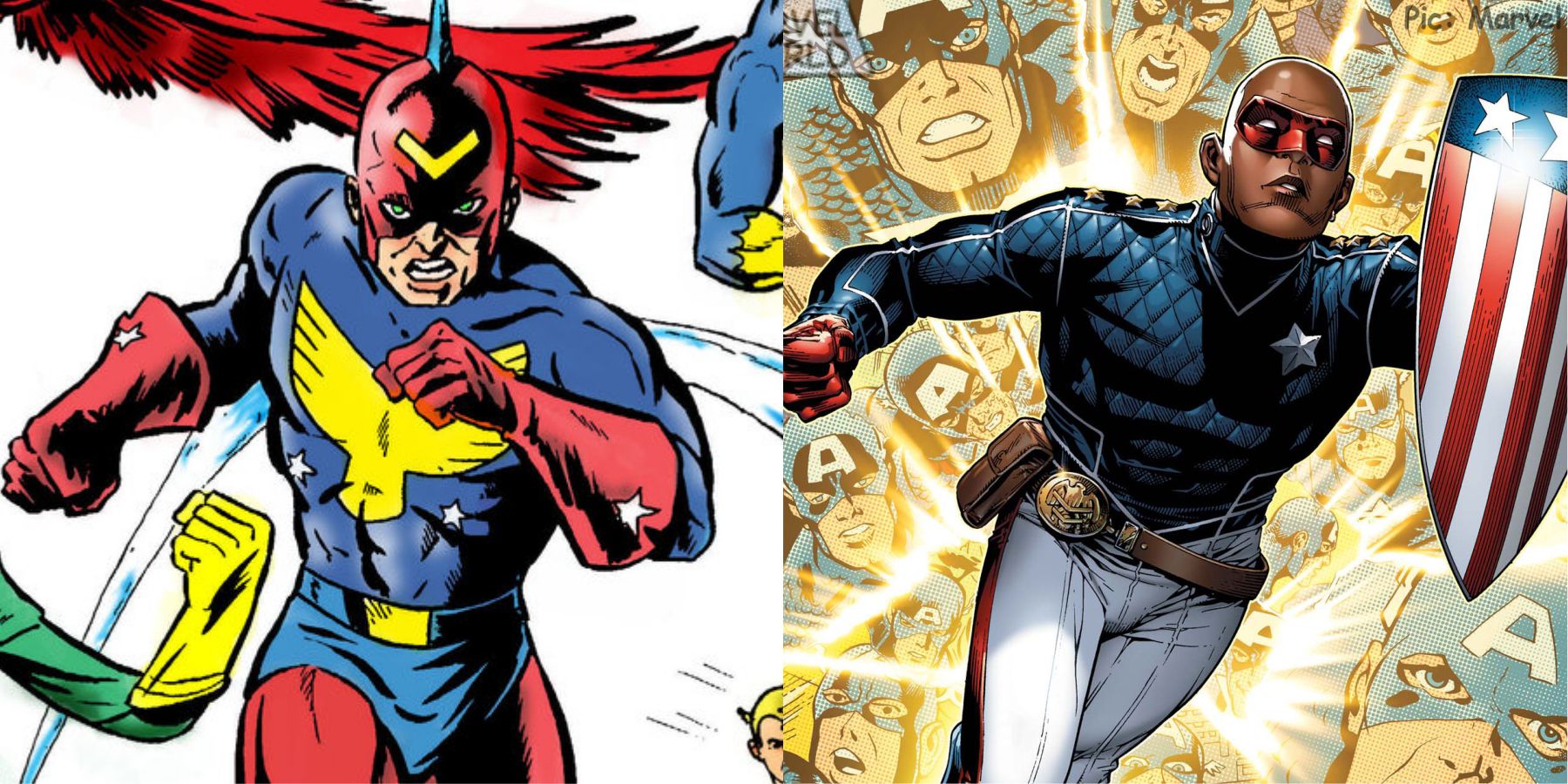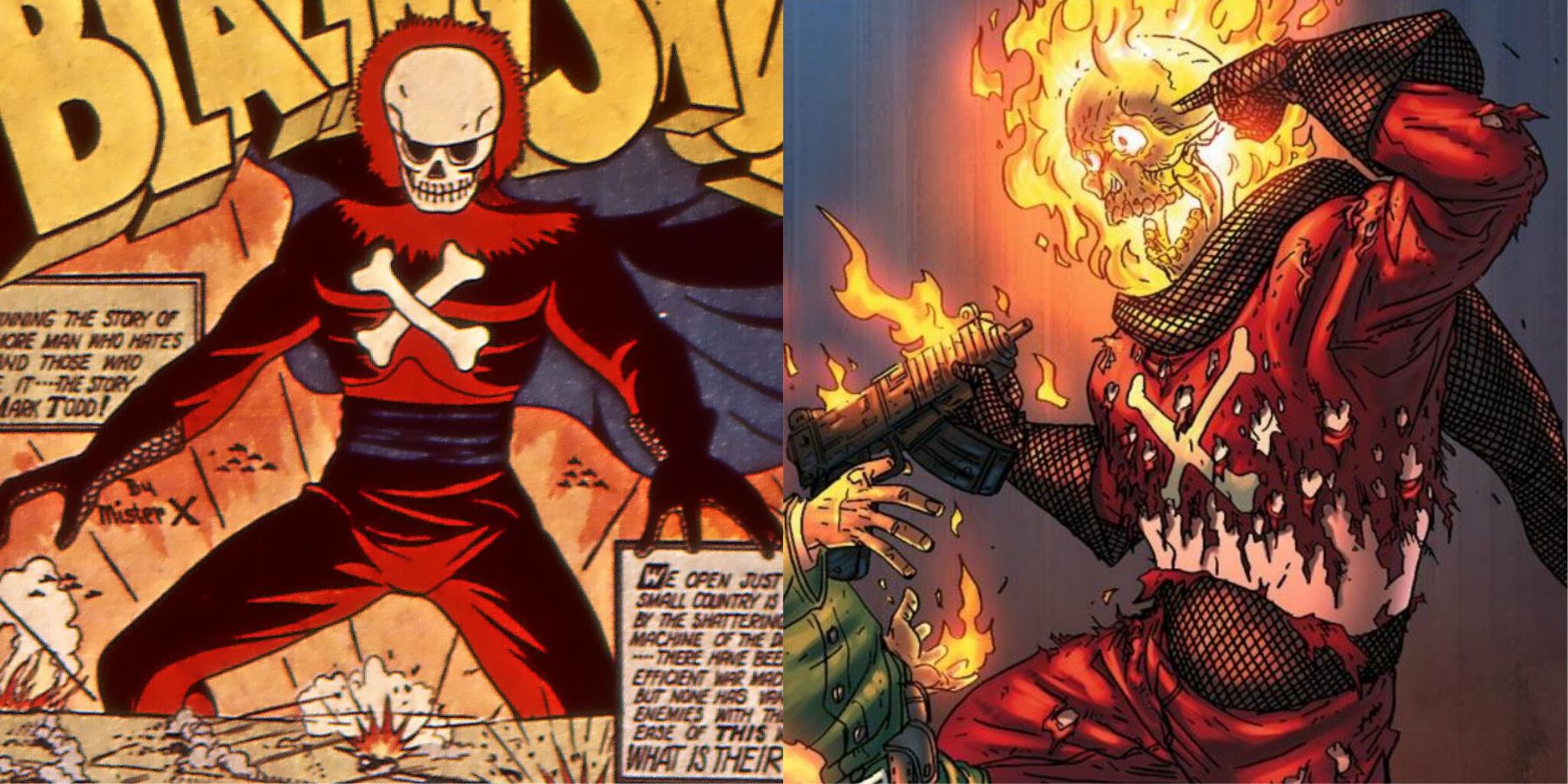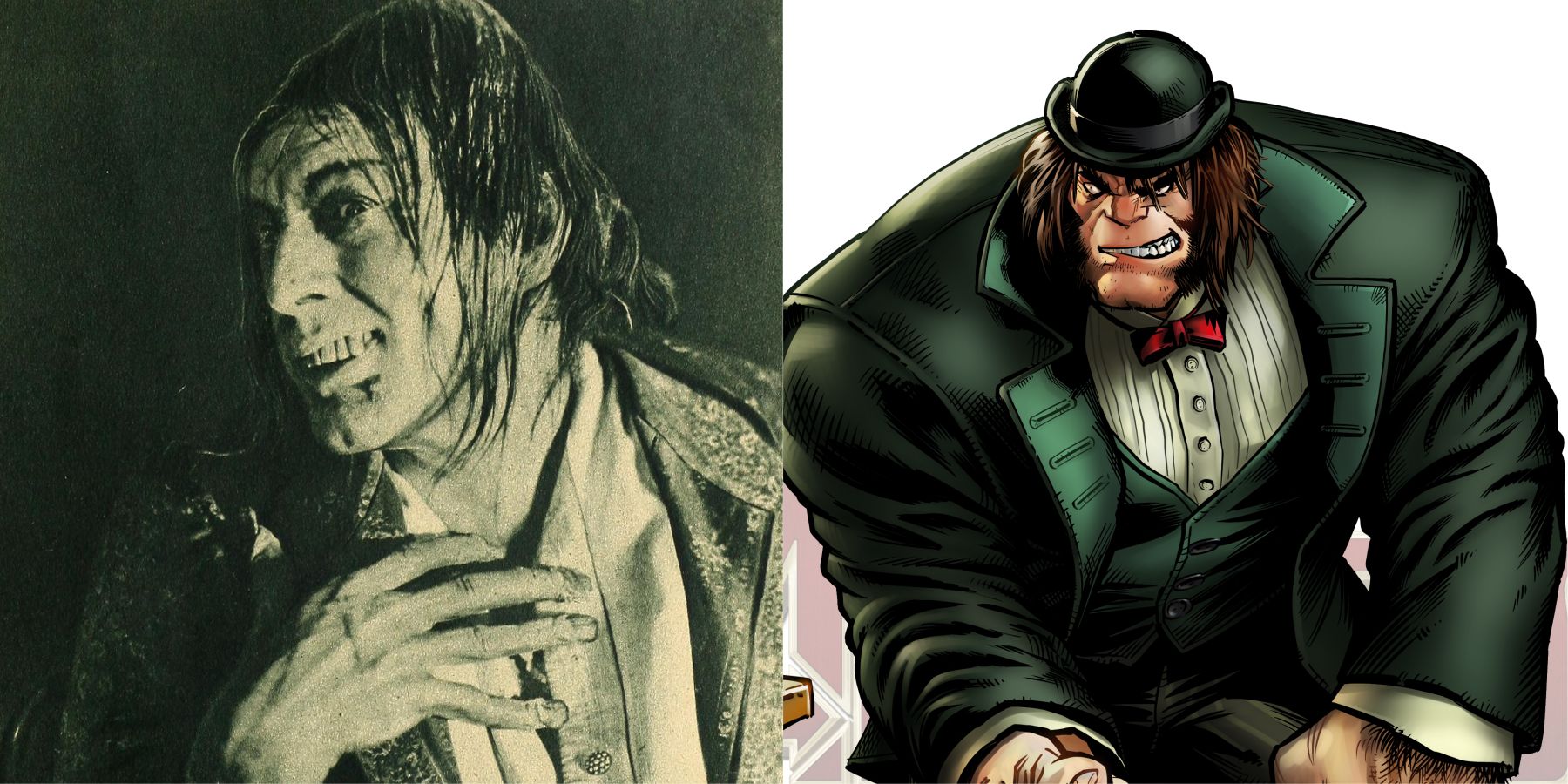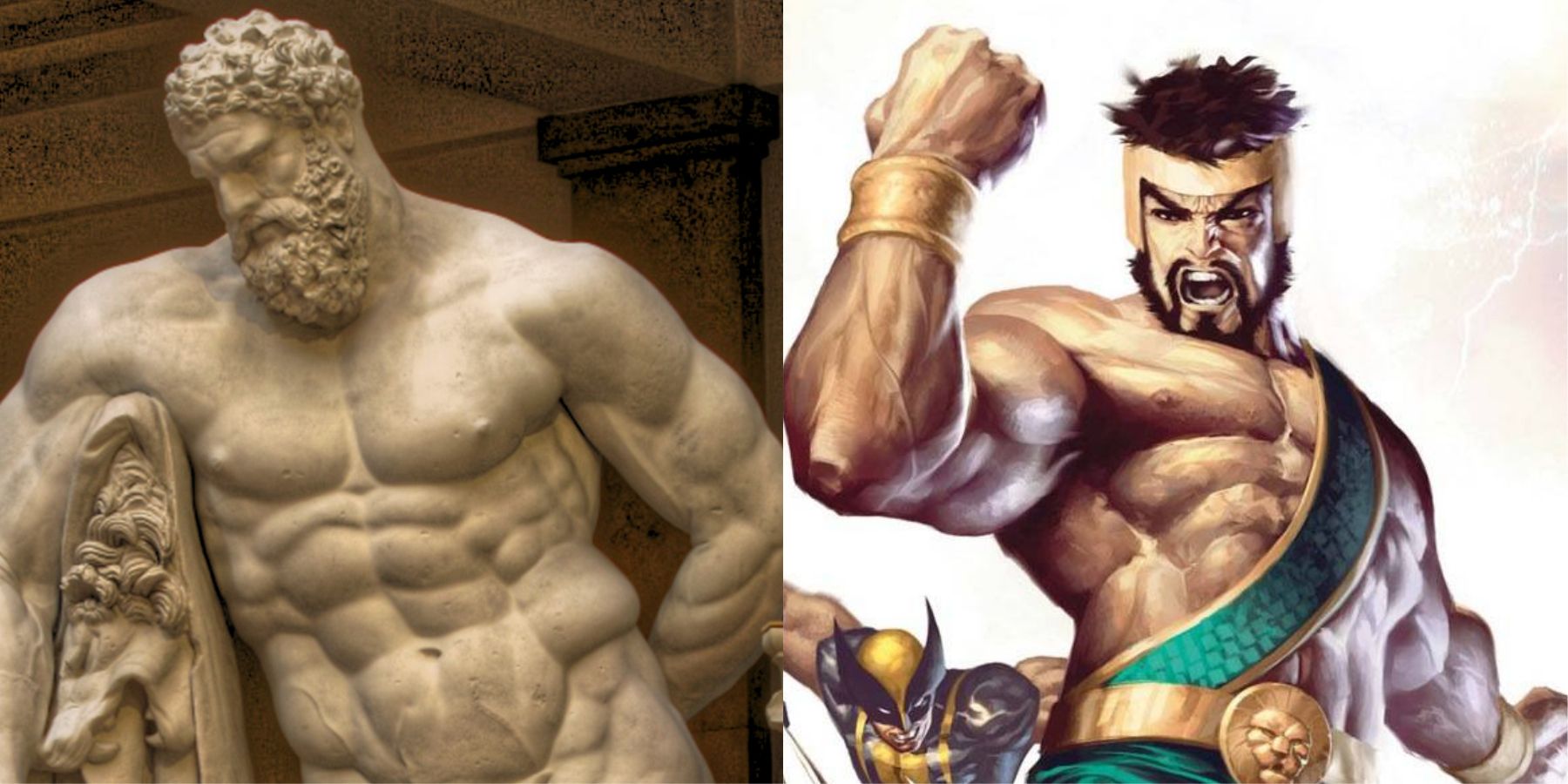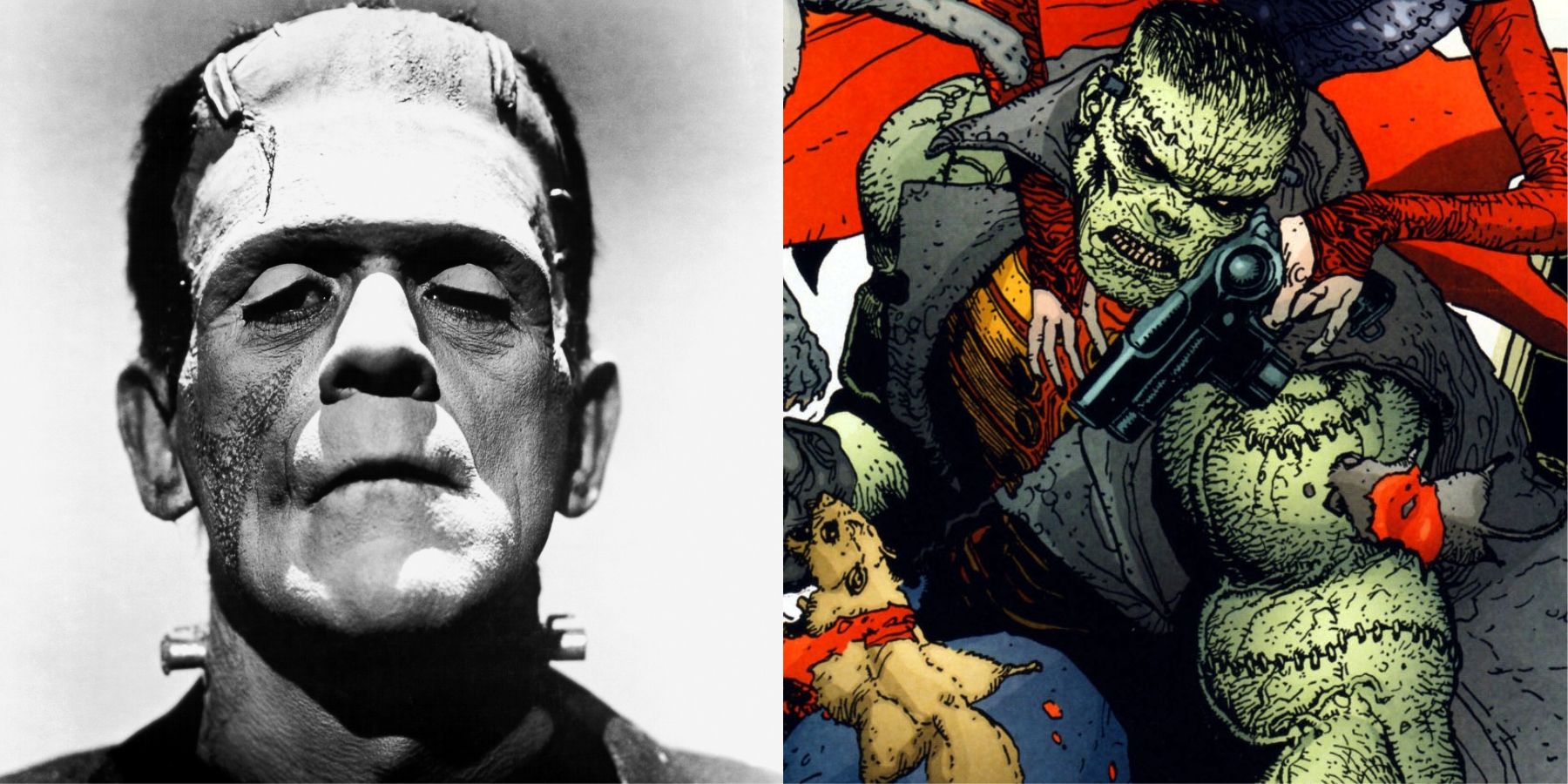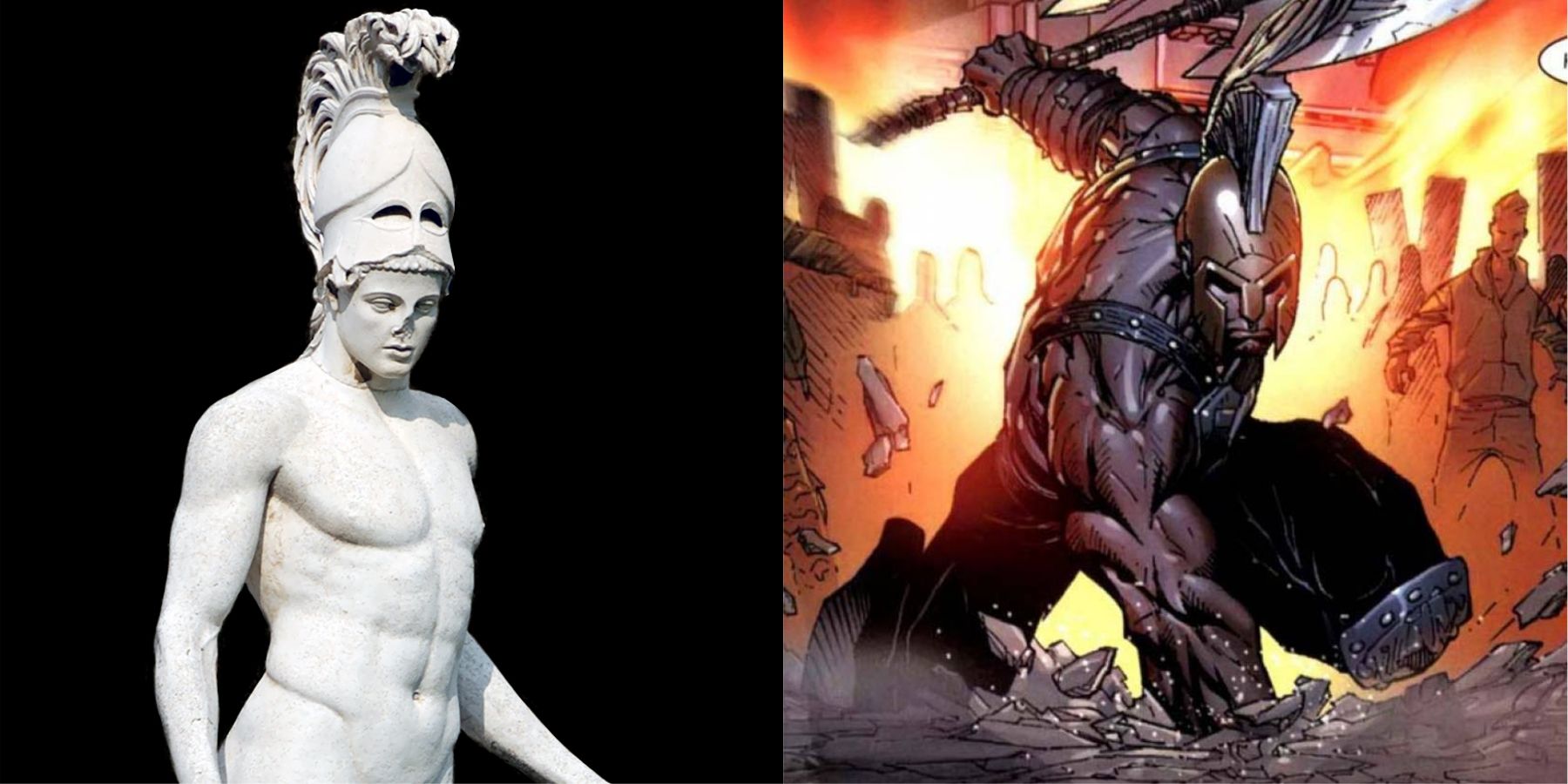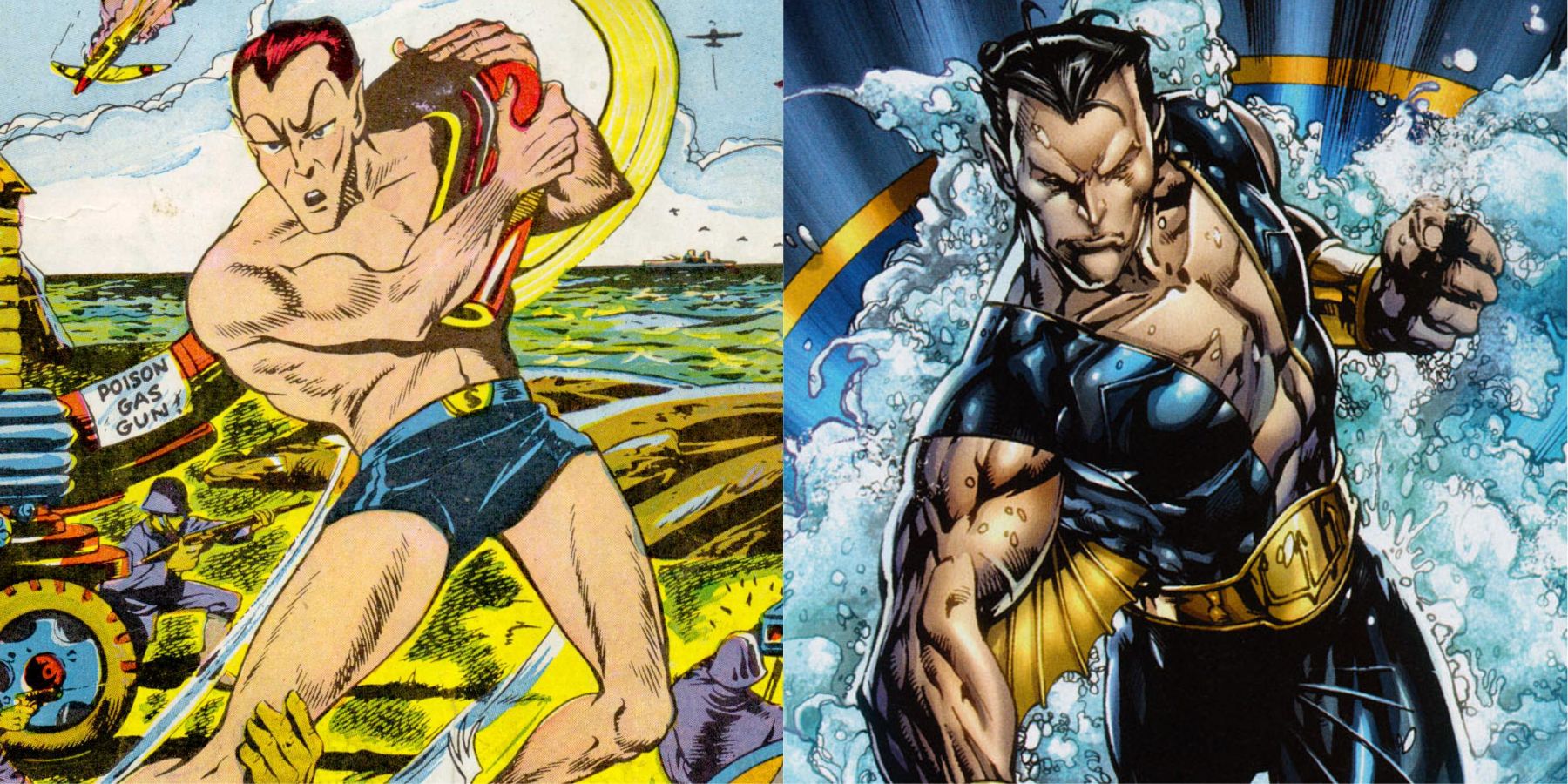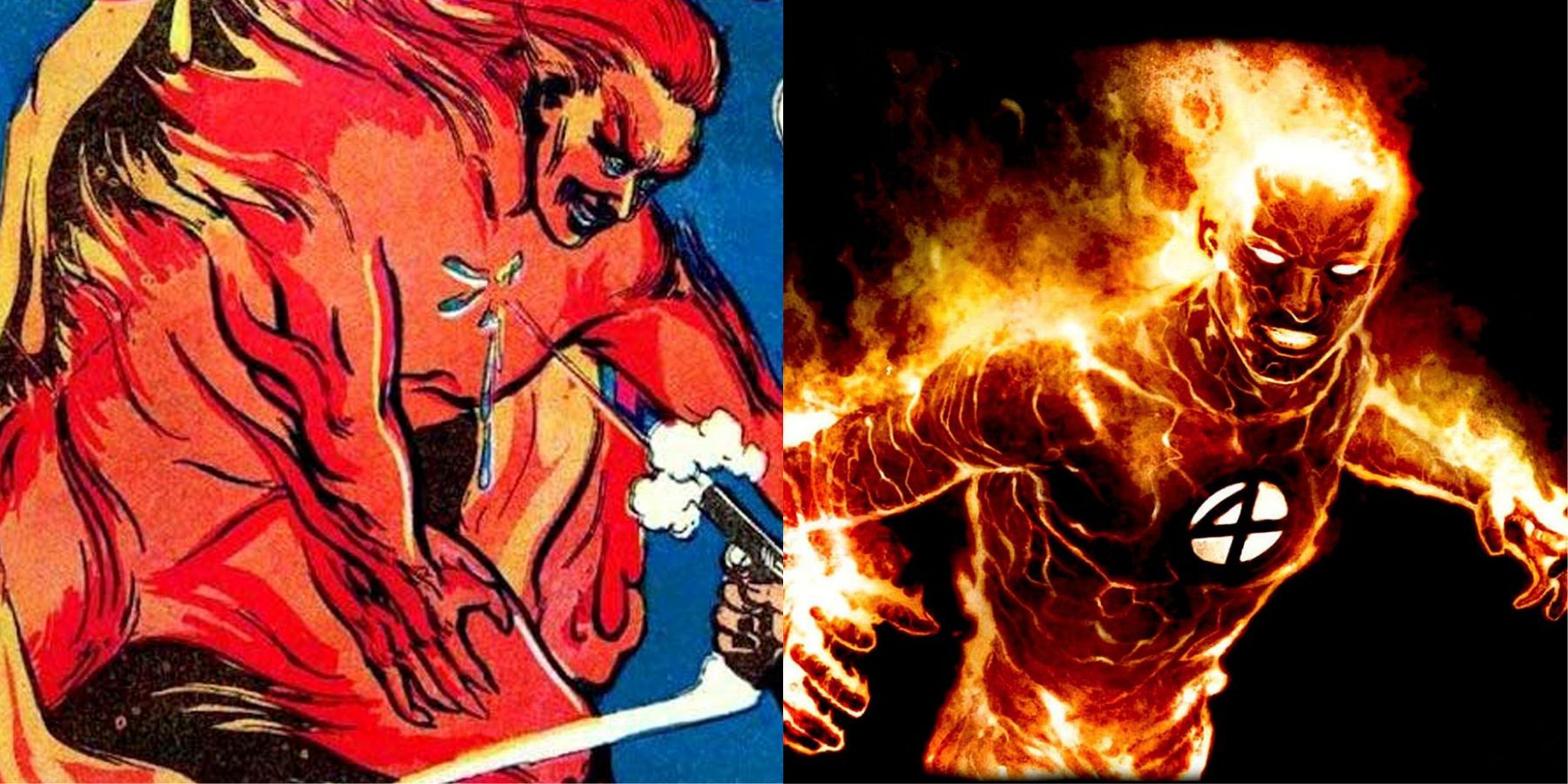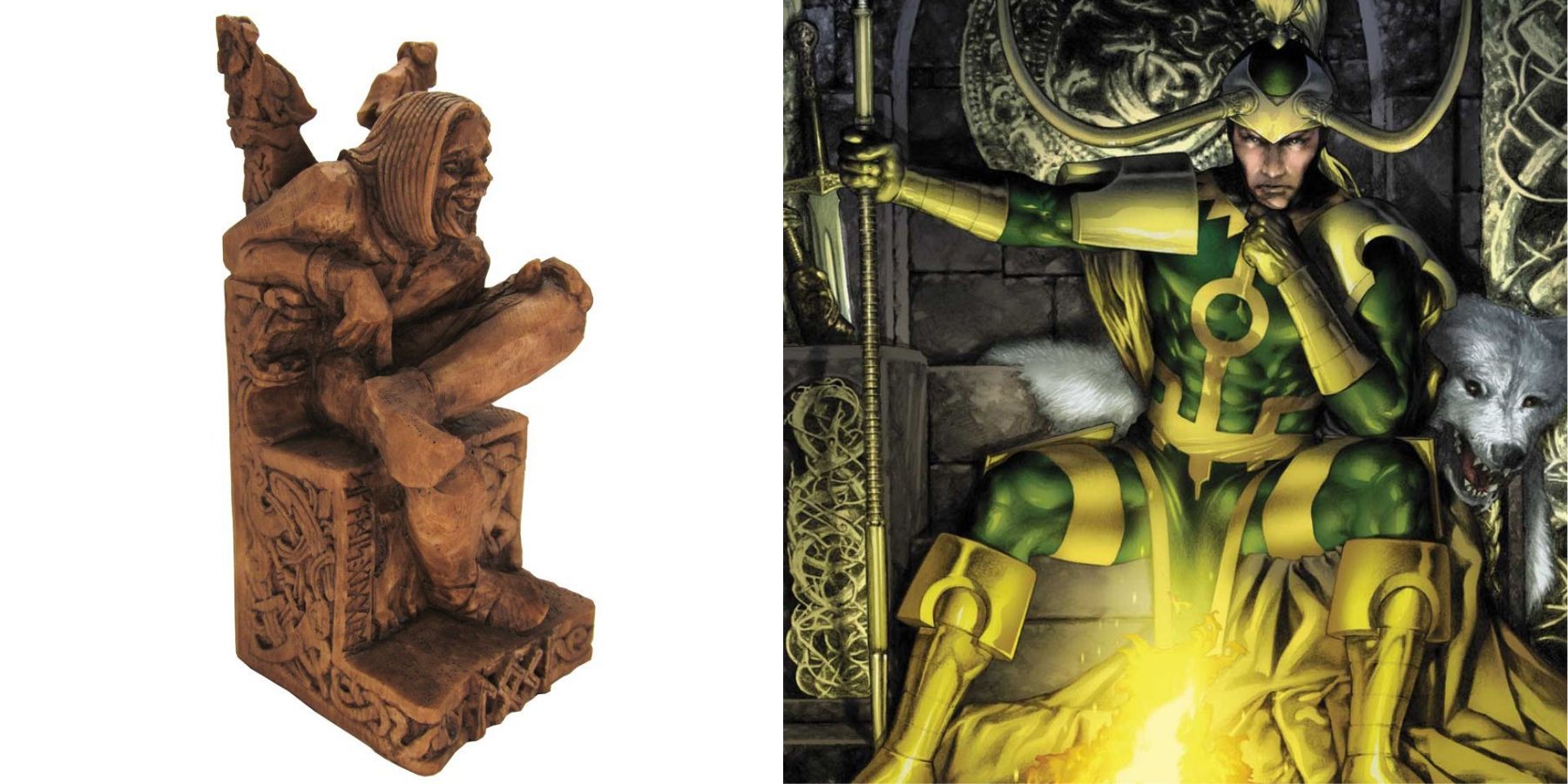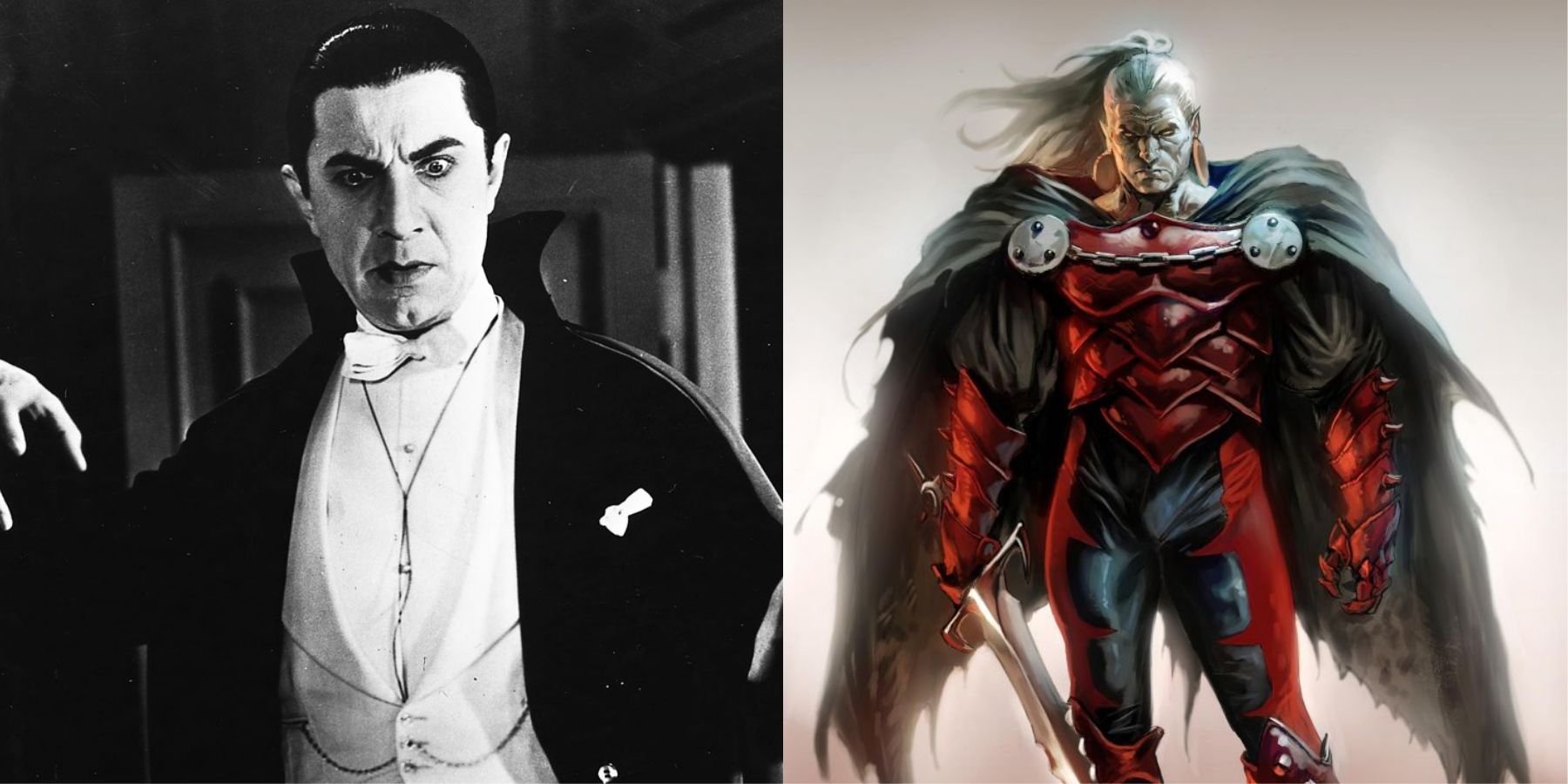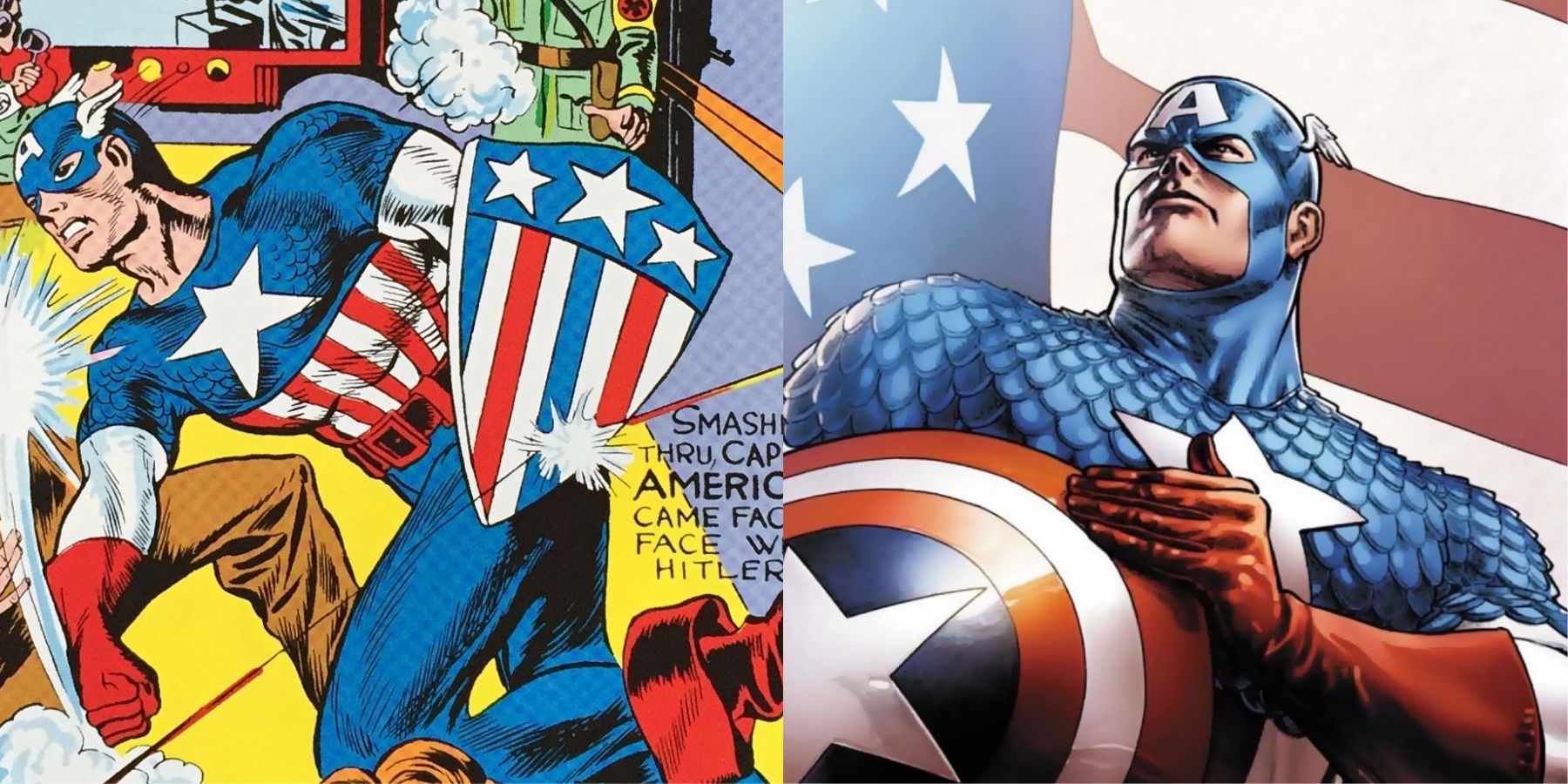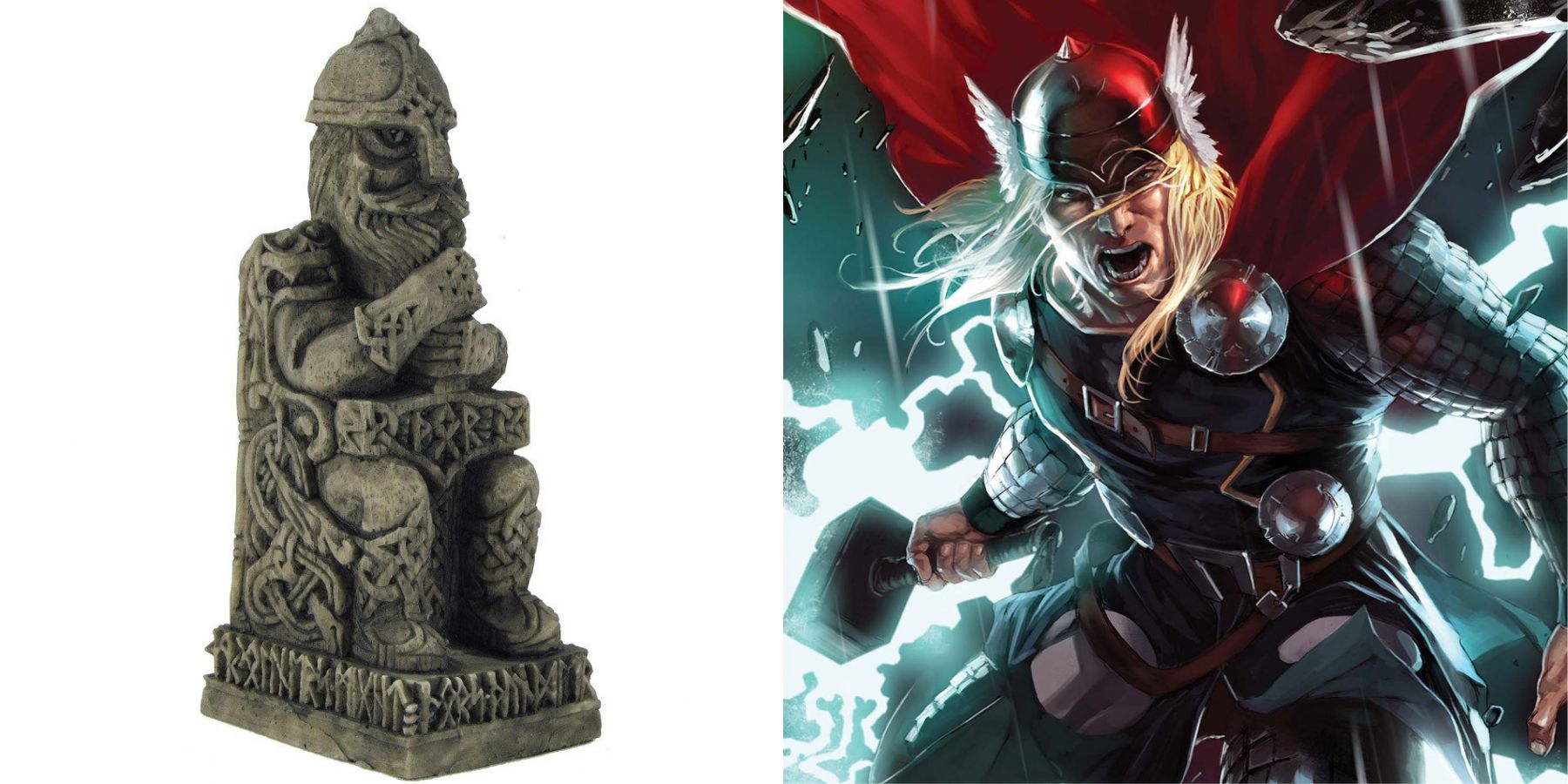Marvel has been an institution of American comic book publishing since it first formed in 1961, but it certainly didn't spring from nothing. The company we now call Marvel Comics was originally made up of several different smaller publishing houses all grouped under the auspices of Martin Goodman. When Goodman first started publishing comics, he formed a company he called Timely Comics, which published all manner of comics and pulp material. The company later changed to the Atlas News Company and then finally merged with others into Marvel in November of 1961. In the years before Marvel formed, Goodman and his crew published hundreds of books, many of which inspired characters still in print today.
Of course, not all of Marvel's current stock of characters came from Timely and its contemporaries; there are plenty of sources from the Golden Age of Comics, and even mythology, that has inspired the company that created the likes of Spider-Man and the Avengers. With that in mind, here are 15 Amazing Marvel Characters (That Weren't Created By Marvel).
15. Namora
THEN: Namora first appeared in Marvel Mystery Comics #82, published in March of 1947 by Timely Comics. The character was introduced as the cousin of Prince Namor, the Sub Mariner and, like her cousin, she was born of a mixed union. Her mother was a surface-dweller (human) and her father was an Atlantean, which has resulted in her genetic makeup similar to Namor's. Her true name is Aquaria Nautica Neptunia, which definitely plays on the water theme. Folks called her Namora to associate her with Namor and she appeared throughout the Golden Age of Comics in her own 3-issue miniseries, as well as many other books.
NOW: Namora fell off the radar for a couple of decades before finally returning for Marvel Comics in January 1971 with the publication of Sub-Mariner #33. She didn't last long in the new Silver Age Marvel Universe and was killed off in June of 1972 but would occasionally reappear in flashbacks for the next few decades. She finally returned alive and well in 2006 and continues to breathe water and air until they decide to knock her off one more time.
14. Bucky Barnes
THEN: Bucky Barnes was introduced as a sidekick to another character we will mention in a moment all the way back in Timely Comics' Captain America Comics #1 published in March of 1941. He was created by Joe Simon and Jack Kirby and he spent the war fighting for the Allies against the Nazis. He was severely wounded in 1948 and was replaced by Betsy Ross, who became Golden Girl. He reappeared in Young Men #24 in 1953 under Atlas Comics as well as other titles for the brand, but was ultimately unsuccessful at a time when superheroes were on the decline in popularity.
NOW: When The Avengers #4 was published by Marvel in March of 1964, Bucky was brought back, but with a retroactive continuity establishing that he had gone missing at the end of the war and was replaced by the President with a double. He was killed off in an Avengers story from 1965, but was again returned in 2005 when Ed Brubaker and Steve Epting created the backstory for the new character adaptation of Bucky called The Winter Soldier. Over the years, he has been portrayed as a hero, a villain, and even donned the guise of his former comrade between 2010 and 2013.
13. The Vision
THEN: Joe Simon and Jack Kirby created Aarkus, The Vision in November 1940 with the publication of Timely Comics' Marvel Mystery Comics #13. He was depicted as an alien police officer who came from another dimension called Smokeworld. He came into contact with Earth while looking for a suitable dimension to store a dangerous prisoner, and was contacted and convinced by a scientist named Markham Erickson to come on over to Earth to fight crime. After ditching the convict on Jupiter, that's exactly what Aarkus agreed to do.
NOW: The modern character known as Vision was created by Stan Lee, Roy Thomas, and John Buscema, and shares a similar look with his Golden Age predecessor, but that's about it. Vision was introduced as an android created by Ultron in The Avengers #57 published by Marvel in October 1968. He called himself a synthezoid and was meant to be used against Hank Pym, but turned against his creator and joined the Avengers where he has remained as one of the primary members of the team's roster. Another iteration of the character is an amalgamation of Iron Lad and the Silver Age Vision's operating system. He is a member of the Young Avengers.
12. The Patriot
THEN: The Patriot was introduced in The Human Torch #4 in the Spring of 1941 by Ray Fill and Bill Everett for Timely Comics. Patriot had no superpowers or enhancements, but was an exceptional athlete, licensed pilot, and skilled in numerous forms of hand-to-hand combat. The character was named Jeffrey Solomon Mace and he was retroactively found to be the third Captain America after the character's story was rewritten to allow for a return to the Silver Age. The Patriot was one of Timely's most popular second-tier superhero titles from the Golden Age, but he faded out of their books by 1946.
NOW: The modern version of Patriot is named Eli Bradley, an African-American man who comes from a long line of family members associated with the military and the Super Soldier Serum. He first appeared in Truth: Red, White & Black #7 in 2003. He claimed to have received a transfusion from his grandfather, Isaiah Bradley, who was the second Captain America, but was actually taking Mutant Growth Hormone when he joined with Iron Lad to create the Young Avengers. After taking some serious damage in a fight, he received the transfusion from his grandfather, donned Captain America's original shield, and became Patriot.
11. Blazing Skull
THEN: Blazing Skull was introduced in Mystic Comics #5 in March of 1941. Mark Todd was a foreign corespondent assigned to cover the Second Sino-Japanese War. He takes refuge in a cave during a bombardment and meets the Skullmen, who train him in flame control. After he returns home, he dons a costume and mask of a skull and gets involved in the fight against fascism. He later teams up with The Invaders and saves the Sub-Mariner's life. Following the war, he worked with Union Jack and the Destroyer, but was not heard of for decades.
NOW: The modern Blazing Skull is the original Mark Todd, only he has not aged due to his healing factor. His return came in Avengers #82, published in 2004. He was found to be a captive of the Taliban and was freed, but was no longer sane. By this time, his powers had evolved and he could produce fire himself. He can also turn his flesh invisible, which is how he maintains the appearance of a skeleton with a blazing skull. Though he is no longer sane, he is still a valuable asset to the present-day Invaders and the Last Defenders.
10. Mr. Hyde
THEN: Mr. Edward Hyde was the alternate personality of Dr. Henry Jekyll in Robert Louis Stevenson's 1886 novella Strange Case of Dr. Jekyll and Mr Hyde. If you haven't read the book, you have likely heard of the character or seen an adaptation. In an attempt to suppress the evil within himself, Dr. Jekyll creates a serum he uses on himself. Instead of suppressing his demons, they emerge as the evil Mr. Hyde, a hideous man without remorse. In many ways, the two characters inspired another Marvel character, Dr. Bruce Banner and his alter-ego, the Hulk.
NOW: Marvel adapted the character into their line of comics in Journey Into Mystery #99, published in December 1963. He was introduced as Calvin Zabo, a man obsessed with the Stevenson story who took it upon himself to develop his own serum to unlock his own inner strength. He finally achieves his goal and transforms into Mr. Hyde, deciding to conduct all criminal activity in that form instead. He even robbed banks disguised as Thor to hurt his reputation, conflicting with Thor and his secret identity Dr. Blake on numerous occasions.
9. Hercules
THEN: Hercules (Heracles in Greek) was the son of Zeus and the mortal woman Alcmene. He appeared in classical mythology and was known for his incredible strength. Tales of the mighty Hercules tell the adventures he went on throughout his life and the 12 Labors he achieved. Some of those labors include capturing Cerberus, slaying the nine-headed Lernaean Hydra, and slaying the Nemean Lion. Hercules was considered a demigod due to his mixed parentage and was promised a place on Mount Olympus for the suffering he went through on Earth.
NOW: Marvel's modern incarnation of Hercules (they did have a short-lived character of the same name in the Golden Age) is a member of the Avengers and is considered to be one of the strongest characters in the Marvel Universe. He is, in fact, the real Hercules from ancient myth and has established himself as a protector of mankind, as well as the gods themselves, following his exile from Olympus. He was created by Stan Lee and Jack Kirby for Journey into Mystery Annual #1 in 1965 and has become a great friend and sometimes combatant of Thor.
8. Frankenstein's Monster
THEN: The original Frankenstein's Monster was first introduced in Frankenstein; or, The Modern Prometheus by Mary Shelley in 1818. The book tells the story of Victor Frankenstein and his obsession with restoring life to dead tissue. He assembles an enlarged corpse from the body-parts of several people and successfully breeds life into his creation. Many people mistakenly believe the monster is named Frankenstein, but he was only ever addressed as "The Creature" or "The Monster." The characters have been adapted into television shows, theater productions, film and yes, even comics.
NOW: Marvel introduced Frankenstein's Monster in The X-Men #40 in 1968. The character was created by Roy Thomas and Don Heck and was given the powers of immortality, invulnerability, necromancy, super strength, and super stamina. Following the events of the novel, the creature was encased in ice until he was found and revived. He searched for descendants of Frankenstein and finds Vincent Von Frankenstein, who attempts to use him for his own evil purposes. He eventually meets up with Veronica Frankenstein, who wanted to atone for her family's legacy by helping the monster to finally speak.
7. Ares
THEN: In classical mythology, Ares was the Greek God of War. He was one of the 12 Olympians and a descendant of Zeus and Hera. Depictions of Ares suggest he was representative of the violent aspects of warfare and an insatiable warrior who could be destructive. Essentially, Ares was all about the less-civilized aspects of warfare and its brutality. Of the 12 Olympians, he was the most hated offspring of Zeus, and his association with humanity is often wrought with calamity and savagery. He is best known for his love affair with Aphrodite, the Goddess of Love.
NOW: Ares was brought into the Marvel Universe in Thor #129 in 1966 and created by Stan Lee and Jack Kirby. Initially, Ares was a villain and often battled Thor, and his own half-brother Hercules, but he eventually joined the side of good and became a card-carrying Avenger when he was re-imagined as an antihero in 2006. Like Marvel's depiction of Hercules, Ares' backstory is the same as his classical inspiration, though it was tweaked somewhat to allow for him to leave the gods and live among humans.
6. Namor
THEN: Prince Namor the Sub-Mariner first appeared in a promotional comic in April, 1939. He was created by Bill Everett for Funnies Inc.'s Motion Picture Funnies Weekly #1, which is one of the rarest comics in existence, having only 6-9 known copies still remaining. Namor was the son of Captain Leonard McKenzie, a human, and Princess Fen of Atlantis. Namor grew up with a hatred of the surface world and ended up allying with the Human Torch and Captain America after the Nazis attacked Atlantis. Namor was published by Timely and Atlas until his popularity declined with other superhero characters.
NOW: Marvel revived Namor for an appearance in Fantastic Four#4 in 1962. Instead of recreating the hero, they retconned his backstory and made him a member of the WWII superhero team the Invaders. It was established that following the war, he lost his memory and required the assistance of Storm to recover it. Namor returned to Atlantis and found it mostly destroyed, which spurred his desire for revenge. It was also established that Namor was a mutant hybrid, which is why he was able to fly and do other things members of the Homo Mermanus species are incapable of doing.
5. Human Torch
THEN: Timely Comics introduced the Human Torch in Marvel Comics #1, published in October of 1939. The original Torch was an android created by a scientist named Phineas Horton. The Android was released from his glass dome and burst into flames, frightening the gathered audience. He flew away and assumed the identity of Jim Hammond, becoming a police officer for the New York City Police Department. Throughout the 1940s, Torch was one of Timely's signature characters, but fell out of favor in the early 1950s, as did most superheroes of the time.
NOW: The modern incarnation of the Human Torch is named Johnny Storm. Along with his sister Susan and friends Reed Richards and Benjamin Grimm, Johnny was exposed to cosmic rays in Fantastic Four #1, published in 1961 by Marvel Comics. Johnny acquired the ability to engulf his body in fire and fly. He and the others formed The Fantastic Four, and the Human Torch has remained one of Marvel Comics' staple character, appearing in thousands of comics over the years.
4. Loki
THEN: In Norse mythology, Loki was the son of Fárbauti and Laufey, who became associated with the gods by agreeing to a blood-pact/oath with Odin. He was a trickster who was prophesied to bring about Ragnarok, the final battle that would end the world and bring conflict between the gods and the frost giants. For his crimes, he was ultimately condemned to be encased in the earth. He was bound with the entrails of his son under the rock, incapable of moving, while his wife, Sigyn, captured the venom of a snake suspended over his face. It is said that the earth quakes whenever she must remove the bowl to dump out the venom and a drop reaches his eyes, causing him to convulse in pain.
NOW: Marvel introduced Loki in Journey into Mystery #85 in October of 1962. He is the brother and primary antagonist of Thor. Throughout the publication of the character, he has been depicted as a supervillain who comes into conflict with pretty much everyone. He is portrayed by Tom Hiddleston in the Marvel Cinematic Universe as the main villain of the first Thor film as well as the first Avengers movie. Recently, Loki fulfilled his destiny by bringing Ragnarok, but failed and was later resurrected as a woman. He has since retuned to his masculine form.
3. Dracula
THEN: The character Dracula was first introduced to the world in Bram Stoker's novel of the same name in 1897. In the story, Count Dracula attempts to move from Transylvania to England in pursuit of a woman and to spread his curse to others. He battles with Professor Abraham Van Helsing, who pursues him back to Transylvania and finally kills him, removing the curse from the world. Dracula was loosely based on the real life Prince of Wallachia; Vlad the Impaler (Vlad III), who ruled from 1436-1477. While Vlad III was no vampire, he was a brutal ruler who was best known for impaling his enemies on pikes, leaving them to die in agonizing pain.
NOW: Marvel introduced Dracula in Tomb of Dracula #1, published in 1972. He was created by Gerry Conway and Gene Colan, but based on the character from the book. He is most often depicted as a Victorian-era nobleman sporting a large, black cape, and the familiar fangs. He has been affiliated with the Defenders and has battled the likes of Apocalypse. Since he was introduced, he has been killed and resurrected several times and has played a major role in Marvel's other vampire storylines.
2. Captain America
THEN: Timely Comics introduced Captain America in Captain America Comics #1 alongside his sidekick, Bucky. He was created by Joe Simon and Jack Kirby in 1940. The character was created to provide a patriotic appeal to the readers, but the comic was published more than a year before the United States became involved in WWII. That didn't stop Kirby from illustrating the Captain punching Adolf Hitler in the jaw on the cover. It's a good thing they went with that angle, because the book sold nearly a million copies, which was certainly a lot for 1940. Within a very short time, Captain America became the most popular character in comics and he continued to fight throughout the war.
NOW: Marvel reintroduced the character in The Avengers #4, published in March of 1964. They tweaked his origin so that the same character who disappeared in the late 1940s could return as the same age in the modern era. It was shown that he had fallen from an experimental drone aircraft into the North Atlantic Ocean where he was cryogenically frozen in a block of ice. Once revived, Steve Rogers resumed his role as Captain America and joined the Avengers, becoming their tactical leader and the most respected superhero in the group.
1. Thor
THEN: In Norse Mythology, Thor was the God of Thunder. He symbolized the protection of mankind and carried a hammer called Mjölnir. Thor went on many adventures and displayed his immense strength as he battled giants with his hammer made by the Dwarves. Ironically, it was because of Loki's trickery that Mjölnir was crafted and given to Thor. Loki's machinations caused a great deal of trouble for Thor, who spent much of his time either cleaning up Loki's messes or becoming entangled in them. He was often depicted as a large man with red hair and a long beard.
NOW: Thor was introduced in Marvel Comics' Journey into Mystery #83, published in August of 1962. Thor is based on Norse mythology, but he has a few comic book tweaks that make him unique. In the comics, Thor is mystically attached to Dr. Donald Blake, a man who walks with a limp and uses a cane. When Blake slams the cane into the ground, he transforms into the Mighty Thor and his cane becomes Mjölnir. Thor is one of the most powerful beings in the Marvel Universe and was also a founding member of the Avengers. Over the years, different people have been granted the power of Thor. Currently, he's lost his worthiness and can no longer wield his hammer. The new Thor is Jane Foster.
---
Are there any other beloved Marvel characters who got their starts elsewhere? Share them in the comments!

